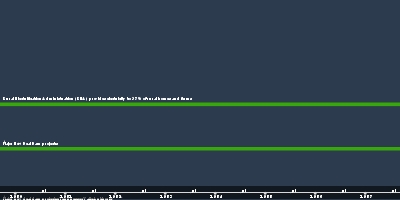1 Jan 1940 Jahr - Summary
Beschreibung:
By virtually any measure, the American economy collapsed between 1929 and 1932. Gross domestic product fell almost by half, from $103 billion to $58 billion. Consumption dropped by 18 percent, construction by 78 percent, and private investment by 88 percent. Nearly nine thousand banks closed their doors, and one hundred thousand businesses failed. Corporate profits fell from $10 billion to $1 billion. Unemployment climbed to 25 percent. By 1933, 15 million people were out of work. “Hoover made a souphound outa me!” sang jobless harvest hands in the Southwest.In his March 1933 inaugural address, President Franklin Delano Roosevelt acknowledged the country’s precarious condition. “A host of unemployed citizens face the grim problem of existence,” the new president said, “and an equally great number toil with little return. Only a foolish optimist can deny the dark realities of the moment.” But Roosevelt also saw determination behind the deep distress, and he pledged to help. “This nation asks for action, and action now.” He would seek from Congress “broad Executive power to wage a war against the emergency, as great as the power that would be given to me if we were in fact invaded by a foreign foe.” With these words, Roosevelt launched a program of federal activism — which he called the New Deal — that would change the nature of American government.
The New Deal contributed decisively to the reinvention of liberalism, the ideology of individual rights that had long defined American politics. Classical nineteenth-century liberals believed that government should be small and relatively weak, in order not to infringe on those rights. Yet the progressives of the early twentieth century believed that state and federal checks on big business safeguarded individual freedom and opportunity. New Deal activists, known as “New Dealers,” went much further: their social-welfare liberalism expanded individual rights to include economic security. Beginning in the 1930s and continuing through the 1960s, New Deal liberals sought to increase the national government’s responsibility for the welfare of ordinary citizens. Their efforts did not go unchallenged. Conservative critics of the New Deal charged that its “big government” programs posed a risk to personal freedom. The divide between advocates and opponents of the New Deal would shape American politics for the next half century.
Before that long process began, the country endured several grim years. Between the onset of the depression in 1929 and when Americans went to the polls in early November 1932, the “dark realities of the moment” convinced most Americans that drastic action was required. As crisis piled upon crisis and federal initiatives under President Hoover proved ineffectual, Americans had to rethink not just the role of government but the very principles of individualism and free enterprise that had guided the nation’s history.
Herbert Hoover expected that the American ideals of self-reliance and self-regulation could enable the country to weather the Great Depression, but the unprecedented economic collapse required a government response of similar scope. Within days of taking office in 1933, Franklin Delano Roosevelt launched a series of reforms known as the New Deal that would radically reshape the role of government in American life. The First New Deal of 1933–1935 focused on economic recovery, providing relief to the unemployed and regulating the financial system. The Second New Deal of 1935–1938 had broader ambitions. Driven by the persistence of the depression and the growing appeal of more radical proposals, Roosevelt promoted welfare-state legislation that created a social safety net.
That safety net was not perfect, and the promise of the New Deal was not realized for all Americans — as seen in examinations of women, African Americans, union workers, immigrants, and Native Americans. However, the benefits drew many new voters into the Democratic fold, forging a coalition of the ethnic working class, African Americans, farmers, middle-class liberals, and white southerners that gave the party a firm grip on power.
The legacy of the New Deal is as complex as its programming. New Deal reforms resolved a banking crisis while preserving capitalist institutions. Through the Social Security system, farm subsidy programs, and public works projects, the New Deal birthed federal policies that touched every American. Massive infrastructure projects and conservation programs — many of them in the West, a still underdeveloped region in the 1930s — improved the national quality of life. And artistic and cultural initiatives employed thousands of writers and artists and inspired new interest in American history and regional folkways. Despite its flaws, the New Deal undeniably reimagined America, even as the depression lingered on. The coming of World War II would test the strength of a nation still recovering.
Zugefügt zum Band der Zeit:
Datum:
1 Jan 1940 Jahr
Jetzt
~ 85 years ago
